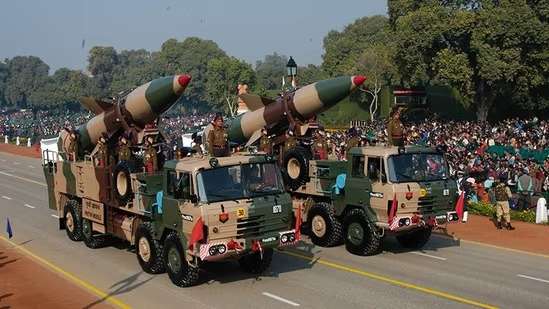
India would construct conventional missile deterrence when nuclear triad is confirmed.
Due to the Siliguri corridor's vulnerability and Bhutan's ceremonial military force, India has chosen to safeguard the North-East with Pralay and Nirbhay missiles.
The Narendra Modi administration is aiming towards a powerful conventional warhead missile deterrent after obtaining a “minimum credible nuclear deterrent” with a tested nuclear trio to thwart Communist Party of China (CPC) military expansionist intentions against India.
Given Bhutan's largely ceremonial military force and India's vulnerability along the Siliguri Corridor, Indian national security planners have chosen to secure the North-East states with conventionally armed short-range ballistic missiles like Pralay and Nirbhay, each of which has a maximum range of 1500 kilometres. India also has other platforms for conventionally armed delivery.
The DRDO, the company that develops missiles, is satisfied with the results of the Pralay and Nirbhay development trials. User trials are now anticipated, and the Defence Ministry has already placed orders for the Pralay missile.
India's nuclear arsenal, which has the potential to launch a second attack and maintain the deterrent after a first strike, supports the conventional deterrent. With the Agni family of nuclear missiles, air delivery systems, and submarine-launched nuclear ballistic missiles, India maintains a no-first-use policy on nuclear weapons.
Given the placement of the PLA's rocket regiments along the 3488 km Line of Actual Control (LAC), India will need to defend its borders with Arunachal Pradesh and the Siliguri corridor against Chinese assault.

In the worst-case scenario, the PLA has already stationed HQ-16 surface-to-air missiles with a 70 km range over the Siliguri corridor in the Yatong region.
In light of this, Indian national security planners have deployed missile defence systems, reinforced fighter shelters for the IAF, and ammunition storage facilities to counter Chinese deployment in the Siliguri corridor and the Northeastern regions.
In order to prevent any US military assault against the Middle Kingdom, China is in reality openly deploying its nuclear deterrent with new missile silos in the provinces of Hami in Hotan, Yumen in Gansu, and Hanggin Banner in Inner Mongolia.
The Hami nuclear missiles in East Turkestan's Taklamakan desert are said to have no fewer than 230 missile silos that are visible to the public, signalling to the rest of the world the strength of China's nuclear missile capacity.
Ballistic and cruise missiles with conventional weapons are launched in advance of its nuclear arsenal to engage the enemy. The Chinese hostility towards Taiwan, which also serves as a demand for submission from ASEAN nations like Cambodia and Laos' client states, is genuine even as the PLA builds new locations.
Only the Philippines has chosen to oppose the CPC at this time, with the majority of ASEAN nations turning towards China as a result of the growing BRI debt.
To further complicate matters for India, China is supplying 039 class diesel attack submarines and armed drones to client state Pakistan with the objective of making India’s western front vulnerable.
It is for this reason that the Indian Navy is expected to give the contract of three more Scorpene class submarines to Mazagon Dockyards Limited (MDL) and strengthen conventionally armed rocket and missile forces on the western border.
Visit For Latest News : Speed News









